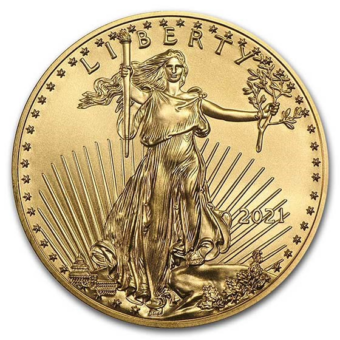A Daily Journey Through the Week's Market
Monday - 8.12.24: Gold prices surged by 1.93%, closing at $2,475.70 per ounce. Silver also experienced a solid increase of 2.44%, ending the day at $28.02 per ounce. The rise was driven by investor anticipation of a U.S. Federal Reserve interest rate cut, alongside global economic instability and a weakening dollar, which bolstered the appeal of precious metals.
Tuesday - 8.13.24: Gold maintained its upward trajectory, climbing 0.36% to close at $2,484.45 per ounce. Silver, on the other hand, experienced a modest decline of 0.30%, settling at $27.36 per ounce. Market participants remained cautious as they awaited key inflation data expected later in the week, which would guide the Federal Reserve's next moves.
Wednesday - 8.14.24: Gold prices held steady, edging up by 0.05% to $2,485.69 per ounce, as investors processed the release of U.S. Consumer Price Index (CPI) data. Silver similarly saw minimal movement, dipping slightly by 0.13% to $27.33 per ounce. The market remained jittery, with traders hedging their bets against inflation risks and potential geopolitical tensions.
Thursday - 8.15.24: Gold prices experienced a slight pullback, falling by 0.12% to close at $2,482.91 per ounce. Silver also slipped 0.14%, finishing the day at $27.29 per ounce. The minor retreat in both metals was linked to profit-taking after the recent rallies, as investors began to weigh the impact of the upcoming Federal Reserve meeting on market direction.
Friday - 8.16.24: Gold prices rose sharply in early U.S. trading on Friday, driven by chart-based speculators and supported by a weaker U.S. dollar and lower bond yields. December gold climbed $21.90 to $2,514.30, while September silver dipped slightly to $28.29. Stock markets in Asia and Europe were mostly positive, but U.S. indexes pointed to lower openings after Thursday's strong U.S. retail sales report eased recession fears, leading to expectations of a modest 0.25% interest rate cut at the September FOMC meeting.
Gold Slips as Consumer Sentiment Improves Amid Election Uncertainty
Gold drops from $2,500 as sentiment rises
By the numbers:
- University of Michigan Consumer Sentiment Index ticked up to 67.8 in August, surpassing July's 66.4 and beating expectations of 66.9.
- Spot gold retreated from its high of $2,500.31, falling to $2,486.40, following the release of the sentiment report.
What happened:
- Consumers' outlook for personal finances and the economy improved, with expectations rising to a 4-month high.
- Sentiment remained split along political lines, with Democrats seeing a 6% boost after Harris replaced Biden as the Democratic nominee, while Republican sentiment dropped 5%.
Zoom out:
- Inflation expectations held steady at 2.9% for the year ahead, while long-term expectations stayed at 3%, reflecting lingering concerns from the pandemic era.
Why it matters:
- The sentiment shift reflects growing economic optimism but signals political uncertainties, impacting both consumer outlooks and gold's performance.
Stocks, Gold, and Silver Rally on Thursday While Cryptos Plunge as Bitcoin Sinks Below $57K
The big picture:
Stocks and precious metals surged on Thursday as strong U.S. consumer and labor data eased recession fears. However, Bitcoin faced a flash crash, dropping 4.7% after nearing $60,000, and the crypto market struggled to regain momentum.
By the numbers:
- Stocks: S&P up 1.61%, Dow up 1.39%, Nasdaq up 2.34%.
- Gold: Gained 0.38%, trading at $2,456.60.
- Silver: Jumped 2.94%, reaching $28.32.
- Bitcoin: Fell 3.6%, now trading at $56,917.
Why it matters:
While equities and precious metals rallied on positive economic data, concerns over a potential U.S. government Bitcoin liquidation sparked a sell-off in the crypto market. The diverging paths show that cryptos may be losing their usual correlation with stocks.
What to watch:
Analysts are pointing to global money supply growth as a potential catalyst for the next crypto bull market. In the meantime, Bitcoin remains in a consolidation phase, with projections suggesting a possible peak near $150,000 by mid-2025.
The bottom line:
Stocks and gold continue to perform well as inflation eases, but cryptos are facing renewed volatility, with Bitcoin bulls struggling to defend key levels.
Fed Poised to Pivot as Inflation Cools
The big picture:
The Federal Reserve may pivot from fighting inflation to addressing labor market concerns after a key Consumer Price Index (CPI) report due Wednesday. Economists expect the CPI to show a 0.2% rise, signaling that inflation is easing.
Why it matters:
With inflation seemingly under control, the Fed could soon cut interest rates to combat a slowing labor market. Investors are eyeing the September Fed meeting, where a rate cut is increasingly anticipated, as unemployment ticks up and inflation retreats.
What to watch:
If Wednesday’s CPI report confirms easing inflation, the Fed could begin shifting its focus to labor, potentially signaling rate cuts in the near future. Market expectations lean towards a quarter- or half-point cut by year’s end, though some analysts argue for more aggressive action.
The bottom line:
A cooling inflation trend may prompt the Fed to shift its strategy, with markets pricing in the possibility of rate cuts to address a weakening labor market.
The Global Economy is Toast…Here’s Why
The big picture:
Six major drivers that fueled global growth over the last 30 years have reversed, leaving the global economy stumbling into a deep recession. Without new growth drivers, we're witnessing a systemic collapse.
What’s gone:
- China's industrialization
- Growth-positive demographics
- Low interest rates
- Low debt levels
- Low inflation
- Tech productivity boom
Why it matters:
China's growth spurred global recoveries from past recessions. Now, with China’s economic model hitting saturation and global demographics shifting, the economy is burdened by high debt and inflation. The days of rapid growth, low costs, and easy money are over.
The bottom line:
As inflation rises, debt levels soar, and wages increase, the global economy faces structural stagnation. Tech won’t save it this time—AI won’t generate enough high-paying jobs or profits to prevent the collapse.
Americans' Household Debt Surged in Recent Years Amid Challenging Consumer Environment
The big picture:
Household debt in the U.S. has surged amid rising inflation and economic challenges, pushing credit card and auto loan delinquencies to their highest levels in over a decade.
By the numbers:
- Credit card debt: Increased 48.1% from $770 billion in 2021 to $1.14 trillion by mid-2024.
- Household debt: Jumped 21.6%, rising from $14.64 trillion in early 2021 to $17.8 trillion.
- Delinquency rates: Credit card delinquencies reached 9.1%, and auto loans hit 8%, their worst levels since 2011 and 2010, respectively.
Why it matters:
Inflation, which peaked at a 40-year high in 2022, has eroded disposable income, forcing many households to rely on credit. Coupled with the Federal Reserve's interest rate hikes, these conditions have pushed more Americans into debt and delinquency.
What to watch:
Delinquency rates are expected to rise further, and if unemployment spikes, financial struggles could worsen significantly.
Gold's Quiet Surge: Why the Rally Is Far From Over
The big picture:
Despite reaching new highs, concerns about a gold correction are overblown. According to ByteTree’s Charlie Morris, gold’s rally is just beginning, driven by central bank demand and underwhelming investor positioning.
Why it matters:
Morris highlights that while macro experts fear gold positioning is too high, ETFs hold as much gold as they did in 2013—before the last crash. Central banks, not investors, are the primary drivers of this rally, and gold continues to show strength despite these fears.
What to watch:
Gold’s quiet rise is expected to continue as the dollar weakens, benefiting commodities and gold, particularly if the U.S. faces prolonged high deficits. Additionally, growing demand for silver in electric vehicles may boost silver prices, further tying it to the precious metals rally.
The bottom line:
Gold remains on solid ground, with strong technicals and bullish momentum, despite doubts. Morris believes the current rally is far from a crowded trade and anticipates further gains as macroeconomic trends favor precious metals.
Next Week’s Key Events
Monday, Aug. 19
- 10:00 am: S. Leading Economic Indicators (July)
Tuesday, Aug. 20
Wednesday, Aug. 21
- 2:00 pm: Minutes of Fed's July FOMC meeting
Thursday, Aug. 22
- 8:30 am: Initial Jobless Claims (Aug. 17)
- 9:45 am: S&P Flash U.S. Services PMI (Aug.)
- 9:45 am: S&P Flash U.S. Manufacturing PMI (Aug.)
- 10:00 am: Existing Home Sales (July)
Friday, Aug. 23
- TBA: Fed Chair Jerome Powell expected to speak at Jackson Hole retreat
- 10:00 am: New Home Sales (July)
IMPACT ON PRECIOUS METALS MARKETS
U.S. Leading Economic Indicators
This report provides an early indication of future economic activity. A positive outlook can signal economic strength, which may reduce demand for safe-haven assets like gold and silver, potentially putting downward pressure on prices. Conversely, weak indicators can bolster demand for precious metals as investors seek safety.
Federal Reserve Speeches
Speeches by Fed officials, including Raphael Bostic and Jerome Powell, as well as the release of the July FOMC minutes, provide insights into the Fed’s monetary policy direction. Hawkish comments suggesting interest rate hikes typically strengthen the dollar, leading to lower gold and silver prices. Dovish comments hinting at rate cuts or prolonged low rates weaken the dollar, making gold and silver more attractive to investors, pushing their prices higher.
Initial Jobless Claims
This weekly report reflects the strength of the labor market. An increase in jobless claims signals economic slowdown, which can increase the appeal of gold and silver as safe-haven investments. A decrease typically strengthens the economy and reduces demand for precious metals.
S&P Flash U.S. Services & Manufacturing PMI
These reports measure economic health in the services and manufacturing sectors. Strong PMI readings suggest robust economic activity, which could pressure gold and silver prices downward. Weak results increase economic uncertainty, often driving investors toward the safety of precious metals.
Existing Home Sales & New Home Sales
These reports provide insights into the housing market, which is a key economic sector. Strong home sales reflect economic stability, potentially reducing the appeal of gold and silver. Weak housing data could indicate economic distress, increasing demand for safe-haven assets.






















